- HOME
- Quick Reads
- How to Respond to Negative Feedback in Customer Reviews
How to Respond to Negative Feedback in Customer Reviews
- 4 Mins Read
- Posted on October 3, 2019
- Last Updated on October 29, 2024
- By Natalie
As important as they are for your business, there can be a dark side to reviews. Any time you open the door for feedback, whether it be privately or—more often—on business review sites where visitors are free to express their angriest selves, you’re statistically likely to get some negative reviews.
You may even get some harsh ones.
It’s essential that you respond to every negative review about your business that you come across. Don’t be defensive. Come at it with the mindset that you might salvage a relationship with someone who’s been willing to trust you in the past.
Offer to help solve the problem in a public comment rather than backchanneling them (or, rather, do both). This way, when a prospect stumbles upon that negative review, they’ll also see your offer of help and ongoing support. In other words, they’ll see that you do care about your customers’ happiness, even after the transaction is over.
This may lead to a positive impression, despite the negative review. It may also lead the negative reviewer to respond in kind, try your service again, and change that review to a positive one.
Here’s a great response to a mediocre Yelp review of La Petite Nail Shop:
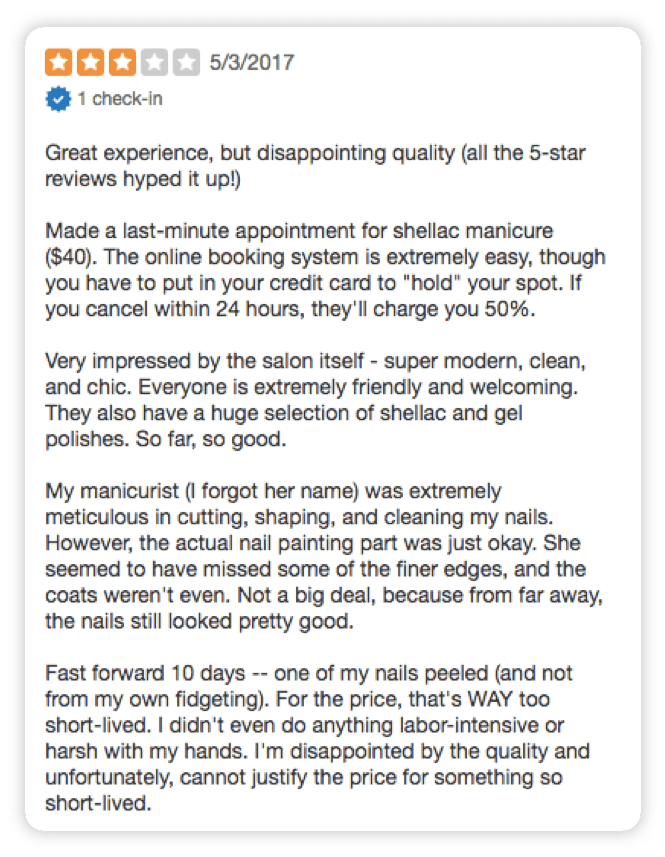
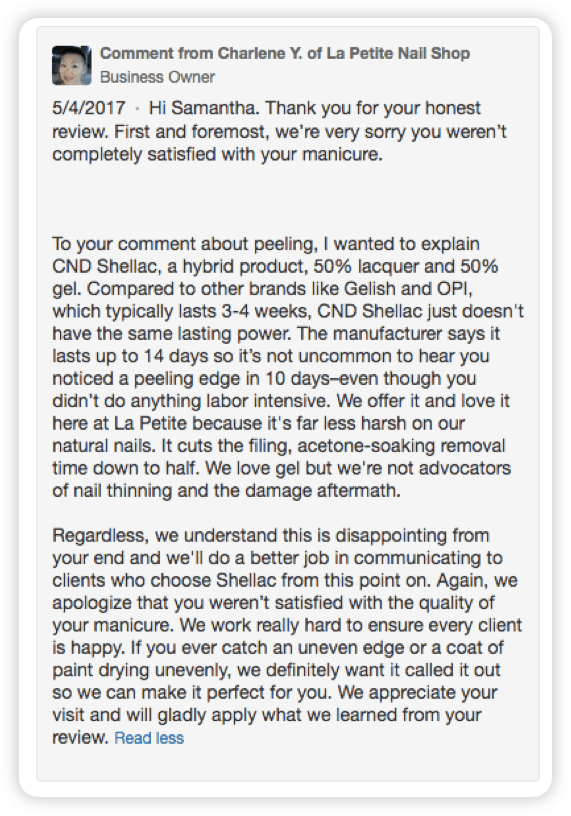
Charlene does a few things here worth pointing out. In the first place, she opens by promptly thanking Samantha for her review and apologizing for her dissatisfaction. She then uses her response to explain what the salon’s product contains and why it’s less resilient than other brands. Educational responses such as these are helpful for prospects who read reviews about your business. They clarify the details of what you offer, and therefore of what your prospect should expect. They also help distinguish you as an authority in your industry.
Charlene also uses her response as an occasion to articulate La Petite Nail Shop’s values (“we offer it… because it’s far less harsh on our natural nails… we’re not advocators of nail thinning and the damage aftermath”). She explains how Samantha’s review will help future customers of La Petite Nail Shop. And while she’s not explicit about it, Charlene’s language implies that she hopes Samantha will return (“If you ever catch… a coat of paint drying unevenly, we definitely want it called out so we can make it perfect for you”). It’s subtle… but there’s an invitation there to try their salon again.
Here’s another admirable response to a review for Taylor / Monroe:
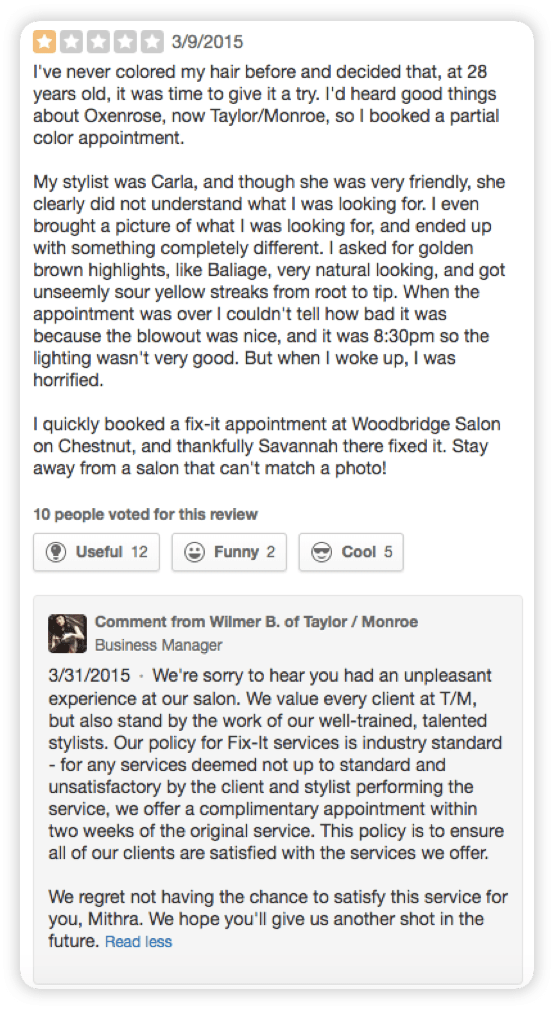
Wilmer uses his response to clarify Taylor / Monroe’s policy: a free appointment up to two weeks after the initial service. Like Charlene, Wilmer immediately apologizes to Mithra and then uses the review site as an educational platform: in this case, to clarify “industry standards.” While his offer for a complimentary appointment comes too late for Mithra, the salon’s “generous” policy of a “complimentary” appointment gets publicized here. This may actually be an advantage for the salon.
(By the way, offering a discount to a dissatisfied customer in a public response looks great for your business anytime).
What’s more, Wilmer uses his response to this negative review to defend his employees (“We value every client… but also stand by the work of our well-trained, talented stylists”). This diplomatic response recognizes Mithra’s dissatisfaction while at the same time helping preserve employee culture at the salon: Carla is surely appreciative of Wilmer’s reply.
Sometimes a bad review comes out of a misunderstanding or a misconception. Rather than “letting it go” as a review that unreasonably jumped to conclusions, address the misunderstanding. It may very well give you the opportunity to make your business look extraordinary. Here’s an example from Revamp Salon:
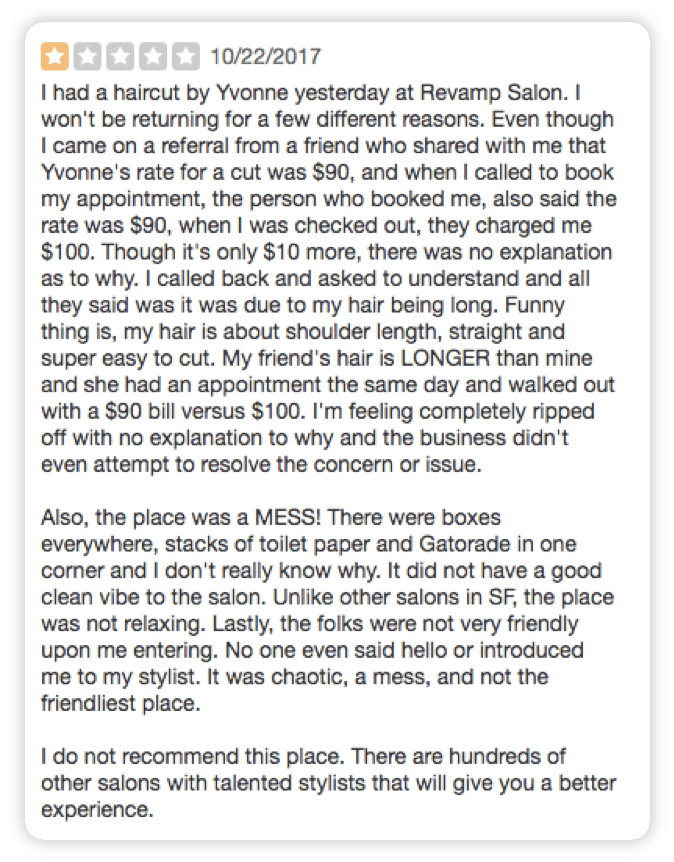
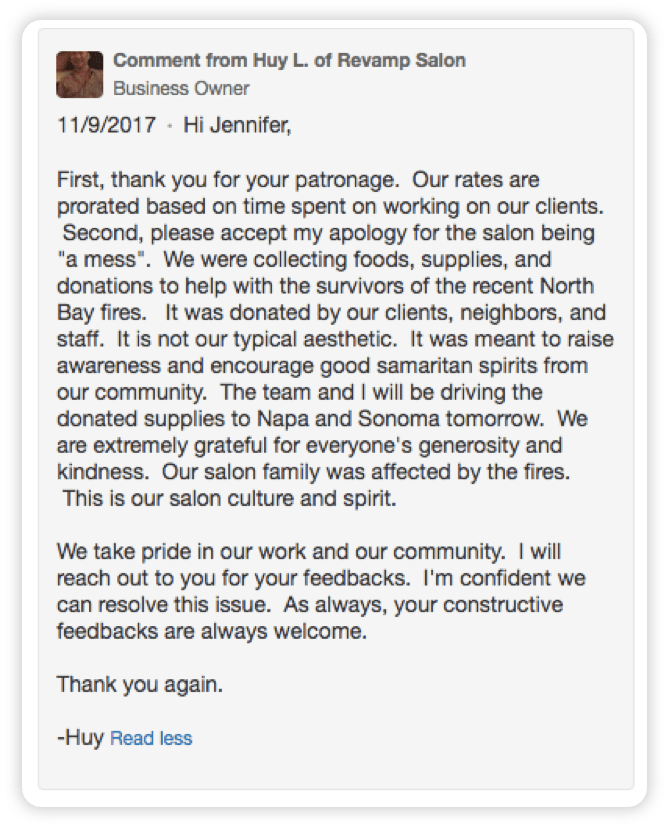
Huy’s is an utterly generous response in the face of what—now that we have the context—reads like a pretty inconsiderate review. Notice he does not, however, disregard Jennifer’s more reasonable complaints: He explains why she was charged what she was charged (“our rates are prorated based on time spent”), and says he’ll reach out to resolve her other complaints—presumably the lack of staff friendliness—in a more private conversation. This is an important best practice. Don’t just leave your response on the review site. Contact your reviewers privately as well.
However, Jennifer’s public complaint about the “mess” is almost a gift: It offers Huy an incredible opportunity to tout the salon’s values—their “culture and spirit”—in a way he probably would never have been able to otherwise. Whether or not it was intentional, this response effectively functions as an advertisement for the salon: It evokes an image of a strong, compassionate community that Revamp is a part of (and perhaps that it has helped build). And Huy’s measured response to an insensitive review in the face of real tragedy makes the business look doubly good.
Regardless of the type of negativity you find yourself having to respond to, the point is to maintain some combination of apology, diplomacy, generosity, and understanding. Who knows, it may very well prompt your once-dissatisfied customer to give your business a second try, as was the case with Crafted Donuts…
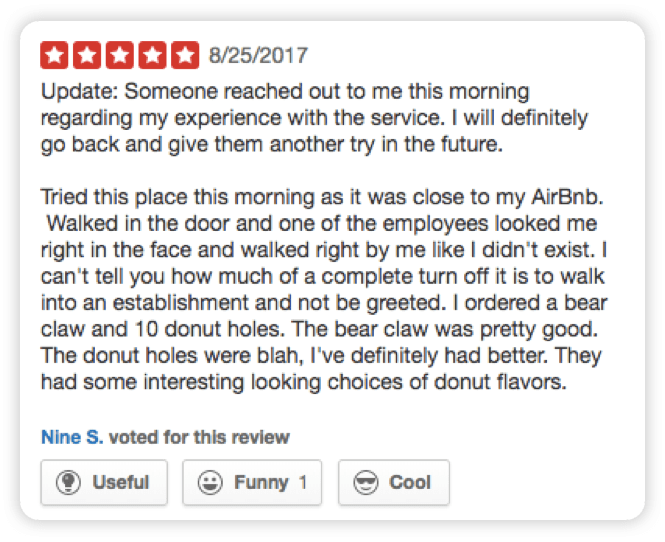
If you do remedy the service and your customer doesn’t update their review, you can always do so yourself in a response, like Onelawn does:
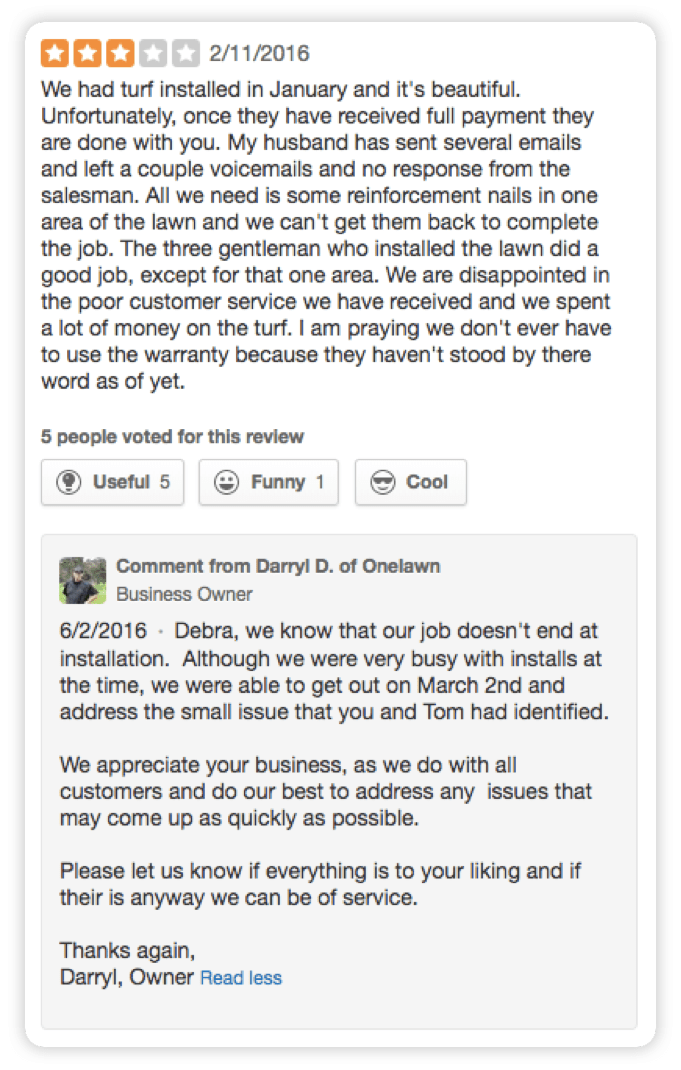
Finally—assuming it fits your brand identity or your business’s voice—remember that the tone of your responses to negative reviews need not be all serious, all the time. Remember, in the case of online review sites, your responses are as much for your prospects as they are for the reviewer. Here’s a sweet response to a negative review for BREW Urban Cafe:

Hopefully these few responses exemplify the kinds of responses you might offer. If you’re struggling for a generous way to respond to a negative online review, take a look at the reviews for other businesses in your industry and see how those businesses have responded to similar complaints.